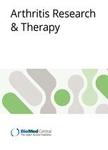版权所有:内蒙古大学图书馆 技术提供:维普资讯• 智图
内蒙古自治区呼和浩特市赛罕区大学西街235号 邮编: 010021

作者机构:Univ Rouen Fac Med Pharm Inst Federatif Rech Multidisciplinaire Peptides 2 Inst Biomed ResINSERMU905 Rouen France Univ Rouen Inserm 905 F-76031 Rouen France Univ Rouen Rouen Univ Hosp Dept Rheumatol Rouen France Univ Paris 05 AP HP Cochin Hosp Dept Rheumatol F-75679 Paris 14 France Rouen Univ Hosp Dept Orthoped & Traumatol F-76031 Rouen France Rouen Univ Hosp Dept Plast & Reconstruct Surg F-76031 Rouen France Univ Paris 05 Inst Cochin INSERM CNRSU567UMR8104 Paris France
出 版 物:《ARTHRITIS RESEARCH & THERAPY》 (关节炎研究与治疗)
年 卷 期:2009年第11卷第3期
页 面:1-8页
核心收录:
基 金:French Ministry of Research and the Arthritis Foundation French Society of Rheumatology
主 题:Rheumatoid Arthritis Rheumatoid Arthritis Patient Additional Data File Early Rheumatoid Arthritis Synovial Biopsy
摘 要:Introduction Rheumatoid arthritis (RA) is a heterogeneous disease and its underlying molecular mechanisms are still poorly understood. Because previous microarray studies have only focused on long-standing (LS) RA compared to osteoarthritis, we aimed to compare the molecular profiles of early and LS RA versus control synovia. Methods Synovial biopsies were obtained by arthroscopy from 15 patients (4 early untreated RA, 4 treated LS RA and 7 controls, who had traumatic or mechanical lesions). Extracted mRNAs were used for large-scale gene-expression profiling. The different gene-expression combinations identified by comparison of profiles of early, LS RA and healthy synovia were linked to the biological processes involved in each situation. Results Three combinations of 719, 116 and 52 transcripts discriminated, respectively, early from LS RA, and early or LS RA from healthy synovia. We identified several gene clusters and distinct molecular signatures specifically expressed during early or LS RA, thereby suggesting the involvement of different pathophysiological mechanisms during the course of RA. Conclusions Early and LS RA have distinct molecular signatures with different biological processes participating at different times during the course of the disease. These results suggest that better knowledge of the main biological processes involved at a given RA stage might help to choose the most appropriate treatment.